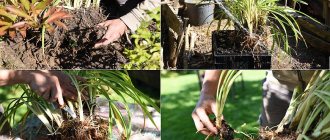Home/Flowers and Plants/How to properly preserve cuttings until spring, or a second life for a rose
It’s not for nothing that the rose is called the queen of flowers. This plant is so beautiful that it can decorate any garden and flower bed.
Experienced flower growers know exactly how to care for this plant and propagate it.
There are several ways to propagate this flower, but experts recommend using the cutting method, which is supposedly the easiest and most effective.
Indeed, it is much more convenient to propagate the royal flower from cuttings.
However, this method has certain nuances, which we will discuss below.
So, if you have been looking for a step-by-step guide on how to prepare and preserve rose cuttings for the arrival of the spring season, then consider that you have found it.
Choosing the “right” cuttings
If you think that any shoot is suitable for propagating a rose bush, you are very mistaken.
The main condition for the viability of the cutting is the absence of damage and disease in the plant bush.
To increase the rose's chances of future survival and flowering profusely, choose cuttings that are medium in diameter, about the size of a pencil.
To make sure that the cat rose bush is ready for cuttings, try breaking off the thorns on the branches; if they give in easily, then the plant is ready for propagation. Only those stems that have several buds or leaves are suitable for cuttings.
Important! It is necessary to separate the shoot from the bush with a sharp tool. A dull blade can damage the cutting and cause infection.
To avoid this, before cutting the cutting, be sure to wipe the blade with an antiseptic solution or pour boiling water over it.
The advantage of autumn cuttings of roses
Most gardeners believe that autumn cuttings are preferable to spring cuttings. This is primarily due to the natural biological cycles of the plant.
- In the fall, the bushes are prepared for wintering, treated with insecticidal preparations, excess growth is removed and the stems are cut, from which the necessary cuttings are obtained.
- Seedlings prepared in the autumn are better able to withstand winter frosts, and even if they damage the above-ground part, new shoots will emerge from the underground dormant buds.
- Reproduction in this way also helps in the fight against the formation of a wild root system: most rose bushes are initially grafted onto rose hips, which, if not properly cared for, can absorb cultivated varieties.
- Another advantage of this technique is that any bouquet purchased in a store can become a source of beautiful roses for the garden.
Step-by-step pruning process
Having chosen a shoot with a diameter of 0.4-08 cm and a length of 14-16 cm, carefully cut the stem.
The top cut should be straight, and the bottom should have an angle of 45°. Then tear off all the thorns and leaves on the branch, leaving only a few buds or leaves.
The next step is to stimulate the rooting process. To do this, the cuttings are dipped into a solution of Heteroauxin or Kornevin.
If they are not available, then you can use your own homemade product. To do this, you will need to mix 200 milliliters of clean water with 0.5 teaspoon of liquid honey.
Rose pruning time
The optimal time for preparing cuttings is summer. June and July are considered to be the most favorable months.
However, if you did not have time to prune, you can postpone the work until the fall, during the seasonal pruning.
Such early harvesting of cuttings guarantees high plant resistance to low temperatures and pests that the flower will encounter next year.
We create ideal storage conditions
The secret to whether the cuttings will take root after planting lies in the optimal conditions for storing the workpiece.
First of all, what you should pay attention to is the temperature regime. It should remain stable in the area from +3° to +5° Celsius.
If the temperature drops below, the cuttings may freeze; a higher temperature will contribute to the awakening of the planting material.
The humidity in the storage area should fluctuate between 65-70%.
To prevent rose branches from becoming moldy, they must be ventilated once a month, i.e. take it to another room with a different temperature regime.
To eliminate the possibility of damage to the shoot, it is necessary to protect it from the possibility of freezing, drying out and sudden changes in temperature and humidity.
If signs of mold do appear on the cuttings, be sure to wash the branches in an iodine solution or a product based on copper sulfate. Such disinfection will protect the rose from rotting and the spread of fungus.
Winter on the balcony
Preserving rose cuttings in winter is also possible on the balcony. This method is especially relevant for residents of city apartments.
- After the first autumn frosts, cuttings with two or three buds are pruned. Their size should be about 20 cm.
- You need to pour a thick layer of expanded clay into a plastic bucket, then pour soil for roses. It is useful to mix it with Perlite.
- The prepared soil should be slightly moistened.
- Each cutting must be dipped cut side into water, then into powder to stimulate growth. Then place it in a pre-dug hole.
- Next, you need to wrap the bucket in cellophane and secure it on top with clothespins. Then the bucket should be wrapped in warm blankets.
- Now the entire structure can be taken out to the balcony and placed in the warmest and brightest place. If the floor is cement, then foam or boards should be placed under the bucket.
- There is no need to water the plants often. In good sunny weather, you can let them breathe a little: remove the clothespins and spray them with water to which Epin has been added. The bag should be closed only after complete drying.
- In case of severe night frosts (below 20 degrees), it is better to bring the sprouts indoors.
- When spring comes, the resulting seedlings can be planted in the garden. You need to take it out of the bucket with a tablespoon so as not to damage the neighboring cutting.
To grow roses, you have to tinker. But true connoisseurs know that the opportunity to enjoy the beauty and aroma of the queen of flowers is worth it.
Check out the article on how to care for gardenia at home
Where to store cuttings?
Experienced gardeners offer several options for storing rose shoots. Here are the most popular ones:
- In the snow. Dig a hole 20-25 cm deep in your garden plot. Cover the bottom with cotton cloth, lay the cuttings on top and cover with another layer of material. Then fill the hole with soil and wait for spring;
- On the balcony. If you live in an apartment and there is no basement nearby, and you don’t want to go to the dacha, then use your balcony.
Take a box of expanded clay, pour some soil mixture on top and moisten it with a spray bottle.
Plant the shoots treated with a special growth agent in the ground, wrap the box in polyethylene and cover with a warm blanket.
As mentioned above, once a month open the box and ventilate the cutting;
- In a refrigerator. Some amateur gardeners manage to store rose sprigs in the refrigerator. To do this, the trimmed planting material is wrapped in damp cotton cloth and wrapped in plastic film on top. Cuttings should be stored in the vegetable compartment, because... he is best suited for this task;
- Under the rose bush. This method suggests storing shoots, so to speak, “without leaving the cash register.” After cutting the cutting, bury it directly under the bush. The whole process completely repeats the first storage option in the snow, although the hole is dug about 15 cm deep.
Rooting in potatoes
You can also root rose cuttings in potato tubers. This is a fairly reliable method, since thanks to the nutrients and starch they are well accepted and reproduce. The tuber should be of medium size, without visible damage. It is treated with a fungicide and the eyes are removed. You also need to prepare the cuttings: remove most of the leaves, lubricate the cut with a solution of potassium permanganate. It’s good to put aloe in aloe juice for 12 hours: this way the plant will drink moisture and the cut will remain fresh. Growth stimulants can also be used. Then a hole is made in the potato into which the cutting is placed.
Advice
The top part can be sealed with paraffin by melting the candle in a water bath.
The tuber and sprout are buried in a small opaque pot and watered with an unsaturated solution of potassium permanganate. You can also plant it in a bag and hang it on the window. In a couple of weeks it will be noticeable that the bud has begun to grow. It is important to water rose cuttings regularly. Once a week, it is advisable to feed with water and sugar; for this, a tablespoon of sugar is dissolved in a glass of water. This procedure will provide the sprout with carbohydrates. A month after planting, it is worth applying complex fertilizers.
Cuttings in a pot must be covered with a jar large enough so that the leaves do not touch the glass. Watering must be of high quality; it is better to choose the drip spraying method. The soil should always be slightly moist. Simultaneously with the appearance of shoots, roots will begin to develop. After two to three weeks, you should begin to accustom the plant to the open air. First, the jar that covers the sprout is slightly raised and secured in this position. The time of this procedure is gradually increased. Then it is completely removed for a short time, also slowly stretching out these periods. When the flower gets used to the open air space, the jar is removed for good. This may take several days.
We recommend: What kind of care is required for Cycas - a green guest from the tropics
There is no need to rush into planting from the pot. This should be done in the spring, then by autumn you can get a full-fledged bush. When buds appear, they are removed.
How to root a rose shoot?
For better preservation of the branches, experts advise rooting the cuttings. This can be done using moss or potatoes.
The first option involves the use of sphagnum. Before use, do not forget to treat it with an anti-fungal agent.
Then wrap the cutting in moss, wrap it in film and send it to a cool, dark place until spring.
When it's time to plant, unpack the branches, trim the thorns and plant the rose in a box filled with river sand and moss.
Another way is to use a potato tuber. Take the vegetable and treat it with an antiseptic, dip the cutting in a weak solution of potassium permanganate.
Then make several holes in the root vegetable and insert rose shoots into them.
Place the workpiece in a hole dug in the ground and cover with a glass jar. Water the cuttings with warm water once a week.
As you can see, there is nothing complicated about independently propagating roses from cuttings.
The main thing is to follow the recommendations, and very soon you will have a whole flower garden in which the rose will be the queen.
AllaAuthor of the article
Did you like the article?
Share with your friends:
Planting rose cuttings in the ground in autumn
It is recommended to immediately plant autumn shoots in a permanent place. In this case, they will not need to be replanted and the roses will take root better.
The following planting order is recommended:
- Dig holes or furrows for planting about 30 cm deep in advance and fill two-thirds with grass and rotted compost.
- The lower part of the workpieces is treated with Kornevin or another root-forming substance.
- Chubuki are planted at an angle of 450, leaving one or two buds above the ground surface.
- Plantings are shed abundantly with water. To prevent them from freezing, they are covered on top with either plastic bottles or glass jars. To circulate air, several holes are made in plastic containers, and small blocks are placed under the jars to allow air to flow. The ground around the dishes is covered with any agricultural material and sprinkled with leaves or straw.











